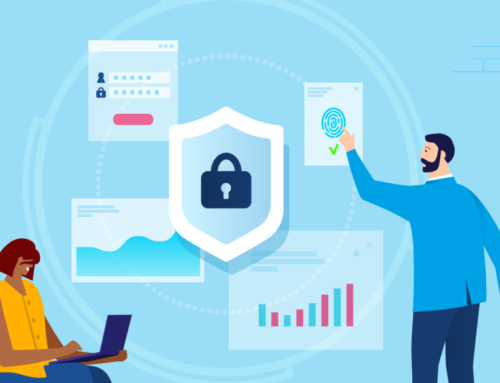To better understand the digital transformation of standards as a priority of future standardization work, China Standardization Press interviewed Yu Xinli, President of China Association for Standardization (CAS), who shared her views and thoughts about the topics such as progress and typical practices at national and international levels.
Background of digital transformation
Chinese President Xi Jinping pointed out that we should vigorously develop the digital economy in China, commercializing digital technologies and upgrading industries with digital transformation and promoting an in-depth integration of digital economy and real economy.
Developed countries and regions, such as EU, Germany, the UK, and the US, have attached great importance to the development of digital economy. They have been integrating new technologies in key national infrastructure projects and sectors including manufacturing, and promoting a new international market to enhance their competitiveness and global leadership.
It is clear that successful digital transformation of standards will not only affect the efficacy of digital transformation in all sectors, but also determine the driving forces and potentials of digital economy. It also sets the tune of China in its future cooperation with other nations, integration to the international trade system, and contribution in the world development.
Progress at national and international levels
The core of digital transformation of standards is to realize digitalized standards – to make standards machine applicable, readable, and transferable (SMART), as defined by ISO and generally accepted at home and abroad now. ISO sets five layers of SMART standards, such as paper, open digital, machine-readable, and machine-interpretable standards.
To make progress in digital transformation of standards, we shall carry out work in two aspects: one is to perform digitalized transition of existing standards only with hard copies, and promote the digital versions in use and management; the other is to directly develop the digital version of new standards and implement digitalized application and management of the standards.
Standardization organizations at national and international levels have carried out research and practices focusing on the digital transformation of standards.
- ISO/IEC
Applying machine-readable standard (MRS) has been taken as a strategic topic by ISO. In 2018, ISO/TMB established a strategic advisory group known as SAG MRS, which investigates the demand on MRSs and assesses potential opportunities and challenges.
As stated in its development plan of 2017, IEC continued to take actions to cope with radical changes that impact the operation of its core business, including open data projects, and new types of standards in machine readable format. In 2018, IEC set up a strategic group on digital transformation known as SG 12 under SMB.
- CEN-CENELEC
CEN and CENELEC launched the Strategic Plan for Digital Transformation in 2017, and carried out pilot projects in 2019. They also performed in-depth legal analysis of the content and IPR protection of digital standards.
In 2021, CEN and CENELEC issued the CEN-CENELEC Strategy 2030 to lead their strategy direction for the decade to come, in which standards are taken as the key tool to promote the flexible, green and digital transition of EU industrial ecosystem. They were also committed to advancing the standardization work with the most state-of-the-art technologies.
- Germany
In 2017, Germany released German Standardization Strategy, proposing 6 major goals to “shape the future with standardization”, pointing out the integration of open source projects and digital transition and taking advantage of open source technologies and methods in standardization.
Based on the strategy, DIN and DKE have taken machine executable standards as a vital means to realize goals and underpin the Industry 4.0 in Germany.
- US
ANSI has listed the SMART standards an important issue in standardization strategy in its annual report 2019-2020.
- UK
In 2021, the UK government launched the Standards for the Fourth Industrial Revolution: HMG-NQI action plan. To realize the action plan, the UK government and the NQI partners shall work in partnership to implement 6 actions to unlock the full potential of voluntary standards, support innovation and enable its swift and safe commercialization. The joint action plan will ensure the effective coordination between standards, policy making and strategic research.
The second action focuses on accelerating the digitalization of standards, including further developing BSI’s capability to deliver machine-readable standards, overhauling its digital platform to improve the accessibility of standards content and information, and facilitating feedback on existing standards and supervision of standards development process, as well as developing the frameworks, good practice guides, and skills training materials needed for digitalized standards.
- China
In October 2021, China has issued an outline to promote standardization development at the national level. The document has put “constantly improving the digitalization of standards” as one of the strategic goals, and proposed the development on SMART and open source standards, so as to promote the transition of standards in a digitalized, cyberized and smart manner.
In December, the 14th Five-Year Plan for Promoting the High-Quality Development of the National Standards System put forward stepping up efforts in building pilot projects on digitalized national standards, and trying to provide national standards in new forms, such as machine-readable, open- source and database forms. It also urged to establish information systems that support the digital transition of national standards.
In terms of organization, ISO/IEC JTC1/SC7/AHG 4 is established to focus on software development, engineering, and system construction of machine-readable standards. In January 2022, a new WG on the digitalization and standardization of national standards started soliciting members from the public.
Typical practices
So far, explorations and experiments have been carried out at various levels.
1. ISO/IEC Online Standards Development Platform (OSD)
ISO and IEC have created this online platform for thousands of experts in standardization area around the world. The platform now is open for trial run.
The platform is designed to provide better:
- Collaboration – experts work collaboratively on a standard in real-time from the preparatory stage
- Accuracy and quality – it takes care of the structure and quality of the document, so experts can truly focus on content
- Straightforwardness – online commenting and comment resolution
- Integration – the platform is accessible via existing ISO and IEC standards development tools
- NISO STS (NISO Standards Tag Suite) – a content development system based on standards
- Harmonization – IEC/ISO standards development and processes
The core of the platform is Fonto Editor, a tool developed by Fonto company compatible with NISO STS schema which allows for semantic enrichment. Fonto Editor is an XML-based tool that allows standards authors, editors and reviewers to exchange comments on standards contents and use metadata. It has proved to be useful in the whole workflow of drafting a standard, supporting experts with its easy-to-use configuration, high compatibility, supportive online coordination and revision control.
IEC and ISO are now using NISO STS, so are CEN-CENELEC and its members.
2. ISO/TC 37, Terminology and other language and content resources
As one of earliest TCs of ISO, ISO/ TC 37 has formulated series standards concerning structured contents, including management on terminology resource and language resources. Over 20 standards have provided important reference for the process and treatment of digitalized standards in terms of text, standards analysis, tagging and processing.
3. Practices of the AVIC China Aero-Polytechnology Establishment
China Aero-Polytechnology Establishment has drawn upon past experiences, and developed management tools, such as the standards structural processing system and standardization management system, to meet the service demands. It is able to provide series of services by tools including fragment processing of standards, structured tagging on contents, data management, process management, and intelligent services.
3. Practices of the AVIC China Aero-Polytechnology Establishment
China Aero-Polytechnology Establishment has drawn upon past experiences, and developed management tools, such as the standards structural processing system and standardization management system, to meet the service demands. It is able to provide series of services by tools including fragment processing of standards, structured tagging on contents, data management, process management, and intelligent services.
Future challenges
All parties involved have reached a consensus on the importance of digital transformation of standards, but differed from each other over features, mechanism, technologies, forms, and models in detail. There are still challenges needing in-depth study.
On policies and planning,we will pursue and follow related policies by setting up a sound system that ensures progress on the digital transformation of standards with solid steps, facilitates the integration of digitalized standards in all sectors, and promote the digital transformation program.
In the era of digitalization for all, we should put the top-level planning in place through a detailed implementation plan and ensure the participation of all stakeholders, including specialists in standardization, technologies and industries and common users.
We will seize the opportunity of the digital transformation of standards and strive to lead the standardization in relevant fields in the world by strengthening cooperation with ISO and IEC.
On mechanism, we must consider the mechanism and main contribution of digitalized standards on supporting the digital economy, to facilitate the interaction between digitalized standards and major factors of NQI.
We need to explore how digitalized standards promote the restructuring of industries and social governance, since it is important to stimulate technical innovation and promote in-depth integration between digital transformation of standards and industries. We should also consider its effect on the value chain of companies.
On implementation, we should dig out the demands on digital transformation of standards in all sectors, including the models and commonalities of the services they require, and well coordinate the study on general technologies and the research on sector-specific application to avoid repeated research and unnecessary investment.
Digital transformation of standards will bring changes to forms, life cycles, research procedures, management patterns, and service modes of standards. The pain points in the process need to be resolved by technical and management means.
There are discrepancies in the use of terminologies and indicators in existing standards. We need to take actions to make sure future digital management, application and services will not be affected.
Source: China Standardization Magzine, 3rd issue, 2022.




